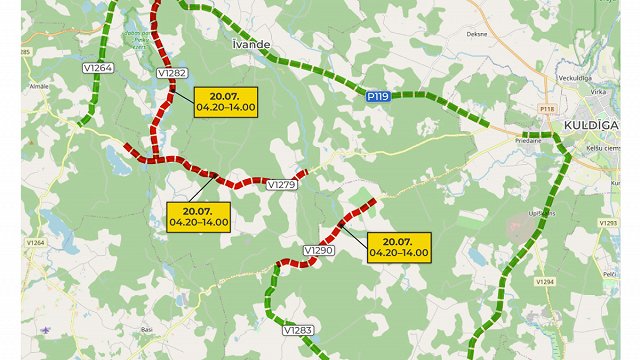With ITS, road users have access to a wide range of transport services, such as traffic management solutions and smart road signs, real-time traffic information, route planners and navigation tools, information on public transport routes, running times and actual locations, information on available parking spaces and their actual fill, the location and status of the nearest alternative refueling stations, warnings of dangerous weather conditions on certain road sections, digital solutions for toll road payment. ITS is increasingly being used to mitigate the negative environmental impacts of transport systems. ITS solutions can improve transport systems, making them more efficient and sustainable.
Although the ITS Directive was adopted in 2010 and the definition of ITS has been included in the Road Traffic Law since 2012, there has been no rush in Latvia to develop ITS services in a targeted way.
There is no clear division of roles between the Transport Ministry and Latvian State Roads (LVC) in the maintenance and development of ITS. Although the overall scope of ITS involves many actors - public administrations, capital companies, municipalities, the private sector - their responsibilities and obligations are not defined.
This hinders the identification of different needs and development ideas of Latvian authorities and the private sector, as well as the implementation of coordinated, complementary, and non-duplicative ITS development solutions.
Data on roads and traffic are also not centralized and are scattered between LVC, Transport Ministry, the Autotransport Directorate and other establishments.
The State Audit Office has made six recommendations to the Transport Ministry and expects that, once implemented:
- Further ITS planning will be targeted and coordinated, achieving ITS objectives and estimated benefits;
- The National Access Point will be developed as a single, central data access point for transport;
- the use of National Access Point data publications will be more efficient; and - the laws and regulations governing the operation of the National Access Point will be approved.
The deadline for implementing the recommendations is April 2028.






























